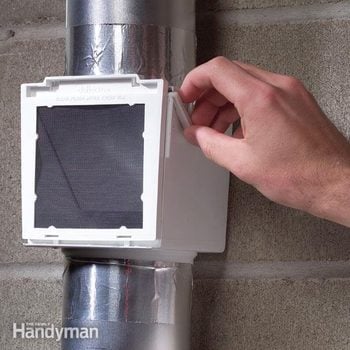How to Properly Vent a Dryer
Updated: Sep. 04, 2017Venting warm, moist air from dryers inside the house causes moisture problems. Try these 5 easy energy saving tips instead.

- Time
- Complexity
- Cost
- A full day
- Beginner
- Less than $20
Vent dryers outside
Venting the dryer outside in cold weather wastes a lot of heat. To make the dyer more efficient, you can buy an inexpensive heat diverter and install it in the exhaust duct of electric dryers only (not gas dryers).You’ll save about 50¢ worth of heat per load in the winter.
But we don’t recommend it for two reasons. First, you’ll be pumping a heavy dose of moisture into your home with each load. In cold weather, that moisture can condense where you don’t want it—on windows, inside walls, in the attic—and can cause mold and rot. And second, you’ll blow fine particles of lint through the filter into your household air. Here are better ways to save energy when you’re drying clothes:
- Dry similar types of fabrics together because some dry much more quickly than others.
- Dry full loads, and one load right after another to conserve heat.
- Clean the lint filter regularly.
- Check the vent flapper outside to make sure it isn’t clogged with lint.
- When you buy a new dryer, buy one that automatically shuts off the heat when the clothes are dry, even if it hasn’t finished its timed cycle. No more “cooked” clothes!
Video: Why You Should Upgrade Your Dryer Vent
Required Tools for this Project
Have the necessary tools for this DIY project lined up before you start—you’ll save time and frustration.
- Cordless drill
- Tape measure
- Tin snips
